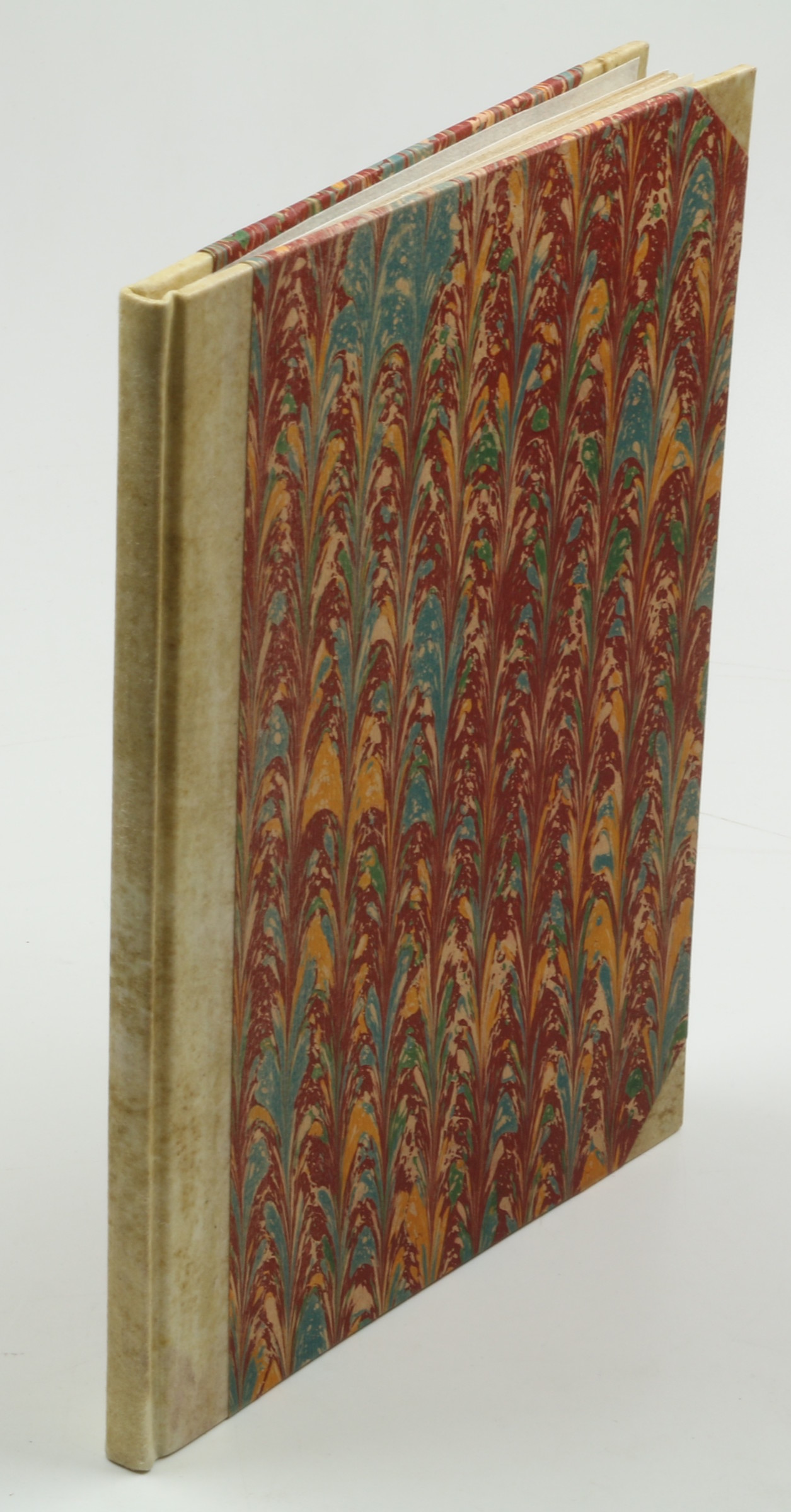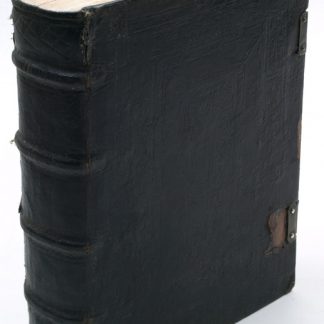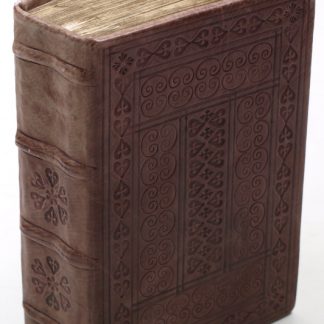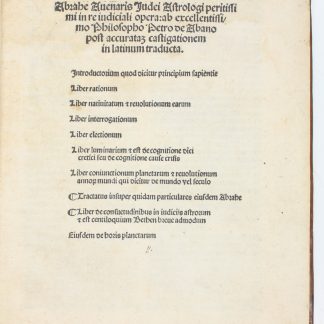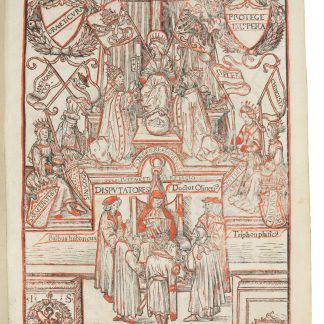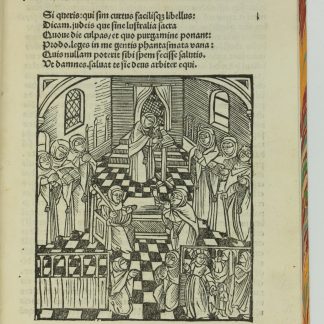Earliest prints of Jewish customs & ceremonies
Libellus de Judaica confessione sive sabbato afflictionis.
4to. (20) pp. With a title woodcut and 4 woodcuts in the text (repeating the title cut). Later quarter vellum over marbled boards.
€ 35.000,00
The rarer of two Latin editions of the "Judenbeichte", both published in 1508, after the "Judenspiegel" the second treatise by the fanatical convert Johann Pfefferkorn (1469-1522/23), in which he discusses his former brothers in the Jewish faith and their celebrations, asserting that the Jews were more corrupting than the devil himself and petitioning the Christian authorities to force all Jews to convert or emigrate. The woodcut illustrations in Pfefferkorn's work are the earliest prints depicting Jewish customs and ceremonies. They include a Kapparot scene, ritual bath, matzo preparation, jumbled together with imaginary representations of Jews telling their sins to crows and a Tashlich service during Rosh Hashanah when sins are cast into water.
Pfefferkorn was a German Catholic theologian and writer. Born Jewish, possibly in Nuremberg, he moved to Cologne after many years of wandering. After committing a burglary, he was imprisoned and released in 1504. He converted and was baptized together with his family. Pfefferkorn became an assistant to the prior of the Dominicans at Cologne, Jacob van Hoogstraaten, and under their auspices published several libellous pamphlets in which he tried to demonstrate that Jewish religious writings were hostile to Christianity, and argued for the destruction of all copies of the Talmud. As late as 1509, Emperor Maximilian empowered Pfefferkorn to confiscate all Hebrew writings in Jewish hands and destroy any he found dangerous. After wide-scale protests, the humanist scholar Johannes Reuchlin was commissioned to give an expert opinion on Jewish writings, which led to a long-running battle of pamphlets between Reuchlin and Pfefferkorn, who was defended by the Dominicans.
A single red pencil annotation to the colophon, otherwise entirely unmarked.
VD 16, P 2311. Panzer VII, 447, 53. Goedeke I, 452. Freimann 263. BNHCat P 429. Cf. Graesse V, 248. Fürst III, 82. Not in Adams or BM-STC German (only the Cologne edition).


